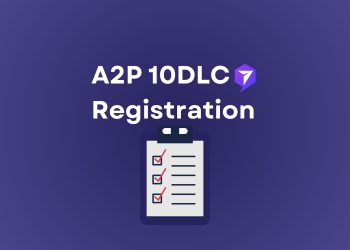In the fast-paced world of politics, successful campaigns depend on practical strategies that connect with voters and make a lasting impression. The 2024 U.S. presidential election has sparked intense speculation and rumors within political circles. A recent announcement that President Joe Biden will withdraw from the race after a controversial debate performance has added a new dimension to the Democratic campaign. Vice President Kamala Harris, who has the backing of many Democratic leaders and donors, seems likely to take the lead, although her official nomination is pending the Democratic National Convention in August. On the Republican side, former President Donald Trump has clinched the party’s nomination following the Republican National Convention in Milwaukee, Wisconsin. These developments are reshaping the dynamics of the election, making it more important than ever to understand effective campaign strategies.
One of the most effective tools in modern campaigning is political text messaging, which allows candidates to connect directly with voters, providing updates, rallying support, and addressing concerns in real time. This comprehensive guide will deep-dive into what makes a campaign strategy successful and provide real-world examples of tactics that drive results, drawing insights from the latest electoral trends and news.
Understanding the Core of Political Campaign Strategies
A political campaign strategy is a blueprint for how a candidate or party plans to achieve its goals during an election. These strategies encompass everything from messaging and mobilization to fundraising and outreach. Its ability to adapt these strategies to changing circumstances sets a winning campaign apart, effectively reaching and persuading the electorate.
One Effective Strategy: Grassroots Mobilization
One effective strategy used by political campaigns is grassroots mobilization. It involves engaging directly with local communities and building a solid network of supporters at the grassroots level. Grassroots mobilization is particularly powerful because it fosters a sense of community involvement and connection with the candidate or cause.
Examples of Campaign Strategies
Now, let’s explore some campaign strategies with real-world examples that have delivered results:
1. Grassroots Canvassing
The Obama campaign in 2008 is a standout example of the power of grassroots canvassing. Thousands of volunteers went door-to-door, engaging voters personally and encouraging them to get out and vote. This strategy helped create a sense of community involvement and led to a surge in voter turnout.
2. Digital Engagement
Digital engagement has become a cornerstone of campaign strategies in recent years. The 2016 Trump campaign strategically used social media platforms, particularly Twitter, to directly communicate with supporters and dominate the news cycle. They leveraged social media to rally the base, share messaging, and fundraise, ultimately securing victory.
3. Targeted Advertising
Campaigns increasingly use data-driven approaches to target specific demographics with tailored advertising. The 2020 Biden campaign, for instance, employed precise ad targeting to reach swing voters in key battleground states. This strategy helped swing critical states in their favor.
4. Fundraising Power
A robust fundraising strategy is vital for any campaign. The Bernie Sanders campaign in 2016 and 2020 stands out for its ability to raise substantial funds from grassroots donors. Small-dollar donations from a large base of supporters allowed the campaign to stay competitive and fund its operations.
5. Get-out-the-vote (GOTV) Efforts
Mobilizing supporters to the polls is crucial to any campaign strategy. The Georgia runoff elections in 2020 saw remarkable GOTV efforts by grassroots organizations and campaigns, leading to historic voter turnout and shaping the political landscape.
6. Debate Preparation
Effective debate strategies can make or break a campaign. The Preparation and performance of candidates during debates are crucial. The 2012 Romney campaign invested heavily in debate preparation, allowing the candidate to shine in the debates and regain momentum.
7. Crisis Management
Campaigns must be prepared for crises that may arise. The 2004 Bush campaign navigated a swift and effective response to the Swift Boat Veterans for Truth ads, showcasing their ability to manage and counteract negative narratives.
Adaptability and Innovation: The Future of Political Campaign Strategies
In the dynamic landscape of political campaigns, adaptability and innovation emerge as critical factors shaping the future. As technology advances and societal dynamics shift, campaigns must remain flexible in their approaches. Adaptability means swiftly responding to emerging issues, changing demographics, and evolving communication platforms. On the other hand, innovation involves leveraging cutting-edge tools, data analytics, and digital strategies to engage voters in new and compelling ways. The campaigns that embrace these principles are poised to not only navigate the complexities of the political arena but also connect with a diverse and dynamic electorate, securing success in tomorrow’s elections.
Lessons from Historic Political Campaigns
History is a treasure trove of valuable insights for political strategists. By examining the triumphs and setbacks of past political campaigns, we can uncover timeless lessons that continue to shape the landscape of modern politics. From Abraham Lincoln’s pioneering use of campaign posters in the 1860s to Barack Obama’s groundbreaking utilization of social media in the 2000s, historical campaigns have shown us the power of effective messaging, grassroots mobilization, and adapting to the prevailing technology of the era. These lessons emphasize the importance of connecting with voters personally, staying ahead of the technological curve, and fostering a sense of community and engagement. By learning from history, today’s political campaigns can better navigate the complexities of the present and chart a path toward success in the future.
Political campaign strategies are multifaceted, dynamic, and continually evolving. What remains constant is the need to engage voters effectively and build a compelling narrative. Whether through grassroots mobilization, digital outreach, targeted advertising, fundraising prowess, GOTV efforts, debate preparation, or crisis management, successful campaign strategies are born from adaptability, innovation, and a deep understanding of the electorate.
In today’s fast-paced political landscape, campaigns that embrace these strategies creatively and authentically will likely drive the results they seek. Learn how to get political campaign management software for your next campaign.














